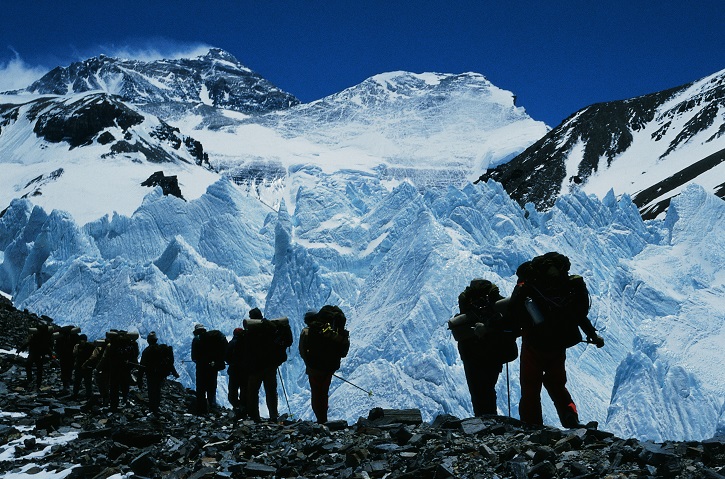Tibetan Plateau Scientific Expedition and Research ranks among the 40 CAS landmark achievements
Author :wangwc
2018-12-27 16:03
On Dec. 19, 2018, CAS released its 40 landmark achievements since the beginning of the Reform and Opening Up. Among them, 15 pushed the frontiers of science, 15 served major national demands and 10 improved people’s livelihood. Tibetan Plateau Scientific Expedition and Research is listed as one of the 15 serving major demands of China.
Tibetan Plateau (TP) is the roof of the world, the Water Tower of Asia, and the Third Pole of the Earth. It functions as an important ecological buffer zone and a key reservation area of resources as well as distinctive Chinese cultures. Tibetan Plateau is of crucial importance to research on earth and life evolution, global climate change and human sustainability.
Tibetan Plateau Scientific Expedition and Research is one of the most distinctive research fields in China. It boasts a unique position in the global history of geographic expeditions. Research on Tibetan Plateau can be lengthy and challenging, as it looks into the fundamental questions of earth sciences and is highly relevant to human communities in its vicinity. With years of hard work, Tibetan Plateau research has developed its own scientific paradigm known as “Tibetan Plateau effect”.
During 1973-1980, scientists from CAS and other 80 research organizations have conducted the First Tibetan Plateau Scientific Expedition and Research (FTEP). Building on previous efforts in 1960s, this expedition has conducted a comprehensive and systematic investigation of the Tibetan Plateau. The expedition obtained myriads of first-hand materials and made groundbreaking discoveries on Tibetan Plateau uplift and its impact on physical and human environment, which then constituted the scientific evidence used for policy-making in the aspects of Tibetan Plateau ecological reservation and socio-economic development. CAS and other research institutes have since organized expeditions to Hengduan Mountain(1981-1986), Karakorum Mountain - Kunlun Mountain (1987-1992), Hoh Xil (1989-1990, 2005), Mount Everest (2005), and West Kunlun Guliya Ice Cap (2015).
The FTEP achievements won the first prize of National Natural Science Award and Chen Jiageng Earth Science Award. Key FTEP members Profs. LIU Dongsheng, YE Duzheng and WU Zhengyi received the Highest National Science and Technology Award, and Prof. YAO Tandong the “Vega Medal”.
In August, 2017, the Second Tibetan Plateau Scientific Expedition and Research (STEP) was launched, with Institute of Tibetan Plateau Research, Chinese Academy of Sciences taking the lead. Chinese President XI Jinping congratulated the expedition team with a letter highlighting the importance of the expedition to “Tibetan Plateau's sustainable development, national ecological progress as well as global eco-environmental protection”.
With a focus on water, ecology and human activities, long-term large-scale monitoring and in-depth investigation will be conducted under STEP to better understand the mechanism of Tibetan Plateau environmental changes and their implications for human and society, which are instrumental to the promotion of Tibetan Plateau’s sustainable development, national ecological progress as well as global eco-environmental protection.
On its first anniversary in August 2018, STEP released its first-stage achievements. So far, STEP has revealed the differentiated uplift of the Himalayas and the biological evolution shaped by coexisting “Out of Tibet” and “Plateau Hub”; it has also detected faster melting of and more frequent catastrophes in the Asian Water Tower as a result of warmer and wetter climate. STEP also warned of potential risks in ecosystems while recognizing their general improvement, developed a scientific plan for Siling Co. National Park and proposed to build a cluster of Third Pole national parks.
As STEP reveals the mechanism of Tibetan Plateau earth system changes, it hopes to provide science-based solutions to preserve and strengthen the capacity of Tibetan Plateau and the broader Asian Water Tower as ecological buffers, to build a cluster of Third Pole national parks as well as to develop green development pathways in the region and beyond.

